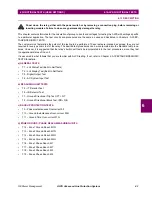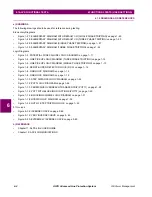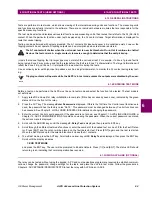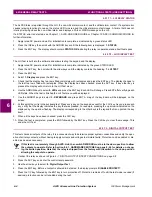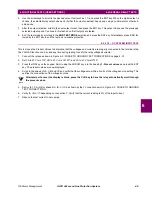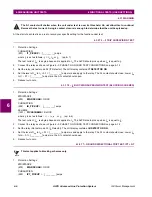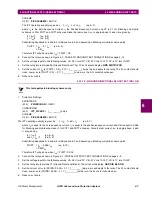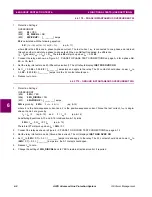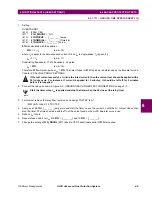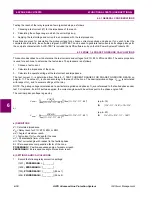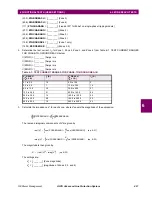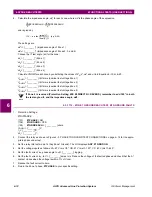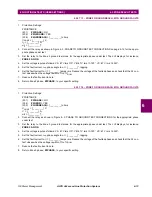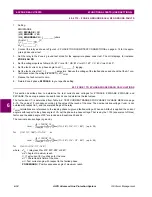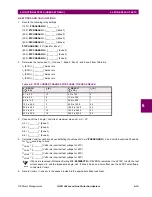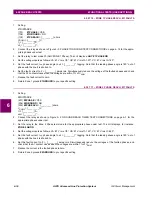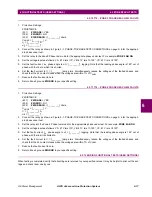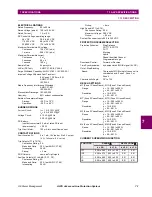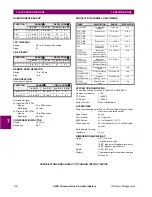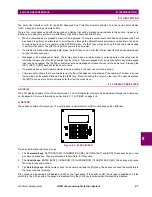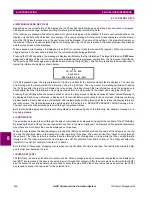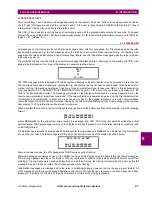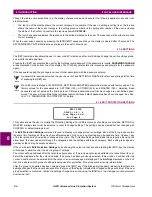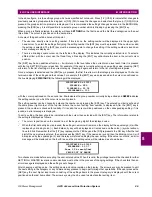
6-10
ALPS Advanced Line Protection System
GE Power Management
6.5 ZONE REACH TESTS
6 FUNCTIONAL TESTS (USER SETTINGS)
6
6.5 ZONE REACH TESTS
6.5.1 GENERAL CONSIDERATIONS
Testing the reach of the relay requires a few organized steps, as follows:
1.
Choosing a test current (IT) for the impedance of the reach.
2.
Calculating the voltage range in which the unit will pick up.
3.
Applying the test voltage and currents in accordance with the test procedure.
Equations are given for calculating the pickup voltage for a chosen current magnitude and phase. If you wish to test the
complete characteristic, the software program, ALPS-TEST, can be used to generate test currents and voltage pickups for
the complete characteristic. ALPS-TEST is included the ALPS software suite on the GE Power Systems Products CD.
6.5.2 ZONE 1–4 PHASE-TO-GROUND CALCULATIONS
This section describes how to determine the test currents and voltages for Z1G, Z2G, Z3G and Z4G. The same procedure
is used for each zone to determine the test values. The procedure is as follows:
1.
Choose a test current.
2.
Calculate the impedance of the zone.
3.
Calculate the operate voltage at the test current and impedance.
The test current,
I
T
, is determined from Table 6–1: TEST CURRENT RANGES FOR PHASE-TO-GROUND REACH on
page 6–11. The value of
I
T
is chosen according to the reach of the zone. The nominal pickup voltage,
V
NOM
, is calculated
with respect to
I
T
and to several settings of the relay.
NOTE: The pickup voltage calculations at a particular magnitude and phase of
I
T
are referenced to the faulted phase under
test. For instance, if a BG Fault was applied, the current angles would be with respect to the phase angle of VB.
The nominal pickup voltage is given by
(eq. 6–19)
for ,
or
(eq. 6–20)
for .
a) DEFINITONS
Z = Calculated Impedance
Z
R
= Relay reach for Z1G, Z2G, Z3G, or Z4G.
øZ = Angle of maximum reach.
I
T
= Test current for
I
op
, chosen for the zone.
øT = Characteristic timer of the zone.
øI = Test current angle with respect to the faulted phase.
K
0
= Zero-sequence compensation factor of the zone.
POSSEQANG = Positive-sequence angle of maximum reach.
ZERSEQANG = Zero-sequence angle of maximum reach.
b) SETTINGS AND CALCULATIONS
1.
Record the following relay protection settings:
(1401), POSSEQANG = [________]
(1402), ZERSEQANG = [________]
(105), Z1GRDREACH = [________] (Zone 1)
(206), Z2GRDREACH = [________] (Zone 2)
V
NOM
Z Z
R
I
T
⋅
⋅
∅
I
∅
Z
–
∅
T
–
90
°
+
(
)
cos
--------------------------------------------------------------------
∅
I
∅
Z
–
∅
T
–
90
°
–
(
)
cos
⋅
=
∅
Z
∅
T
180
°
–
+
(
) ∅
I
∅
Z
<
<
V
NOM
Z Z
R
I
T
⋅
⋅
∅
I
∅
Z
–
∅
T
–
90
°
+
(
)
cos
--------------------------------------------------------------------
∅
I
∅
Z
–
∅
T
90
°
–
+
(
)
cos
⋅
=
∅
Z
∅
I
∅
Z
∅
T
–
180
°
+
(
)
<
<






